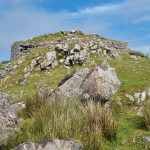
Dun Beag Broch is an excellent example of an Iron Age Round Tower on Skye. It still has a good amount of the walls intact. A very short walk from the car park you can go back in time and see how our ancestors lived. Visible on the skyline from the car park it is an easy walk to the bottom of the rocky outcrop on which it stands.
Location of Dun Beag Broch
Dun Beag Broch stands alongside the A863 Sligachan to Dunvegan road. If you are heading towards Dunvegan the car park is located 0.2 miles outside Struan on the left hand side. There is a brown tourist road sign showing the car park. The Broch itself is on the opposite side of the road so take care when crossing over. There are a couple of picnic benches in the car park so on a nice day you can sit, enjoy your surroundings and maybe even have a picnic.
Getting to Dun Beag Broch
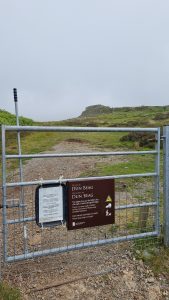
From the car park you will see Dun Beag Broch sat on the skyline on the other side of the road. Cross the road very carefully, it is a fast road and there is no crossing. There is a pedestrian gate that fully opens on the right in front of you. Dogs are allowed on the land surrounding the Broch. However they must stay on a lead as it is a grazing area. In fact you can not miss the sheep! The path is a little gravelly to start with but turns into a smoother grassy slope.
Sarah just walked with two sticks on this occasion rather than her rollator. She felt that it was better for her this way. We think it would be possible with a rollator and maybe with a wheelchair. The latter will depend on the skills of the person pushing. There are some rather steep sections of path that would prove quite tiring going uphill. Coming back down with a wheelchair may be quite dangerous.
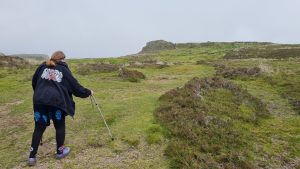
If you stay on the most left of all the grassy tracks this is the widest and smoothest. You will be able to reach the bottom of the grassy knoll that Dun Beag Broch sits upon. The path ahead is now a scramble up through rocks or around the back through reeds and over rocks. Sarah was quite content to get this far and admire the Broch from below. There are plenty of large rocks to sit on and relax. Take a moment to enjoy the view looking back over Loch Bracadale and out to The Minch.
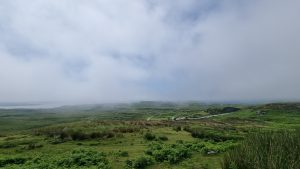
What remains at the Broch?

Whilst Sarah was resting Melanie went on up to the Broch so we can show you what still stands. There is no specific path to the broch so simply pick your way between fallen stones and reeds. It is steep in places but not impassable.
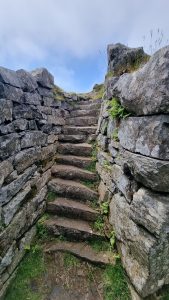
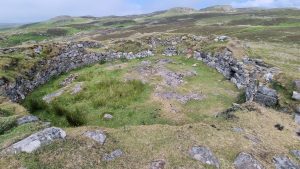
At the far side of the Broch is an information board outlining how the broch would have looked and how it would have been used in the Iron Age. You can see an entrance way into the Broch ahead of you. The walls still stand a metre or so high with a staircase still intact to your left. When the clouds lift you can see that this Dun, in English Fortress, had a great vantage point over Loch Bracadale. Beag simply means small which this Dun really is. When you have looked at everything up here simply find a safe way back down to the path, and head back to the car park.
Fairy Folklore about Dun Beag Broch
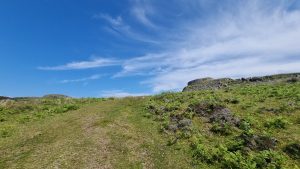
There are many traditions connected with the duns. One says they are the dwellings of the little people or the fairies. There is thought to be danger in approaching them, especially after dark. Mortals, livestock and anything else the fairies took were taken to the duns as they were thought to be either fairy homesteads or the entrances to the land of the fairies. We were sure to visit the dun during daylight hours and the biggest danger we encountered were the rocks strewn about our path. It is possible that this tradition came from memories of the original builders of the duns, possibly Neolithic. Who, when driven underground by a conquering race would occasionally venture above ground to cause mischief and get their revenge and so became perceived as the fairy folk. Certainly, both Stone Age and Bronze Age artefacts have been excavated from Dun Beag.
It was also thought that they were dwellings of ghosts or spirits and as the haar rolled towards us over the loch this started to seem very plausible. So we took this as our cue to call it a day and leave the fairies and the spirits to their mischief.
